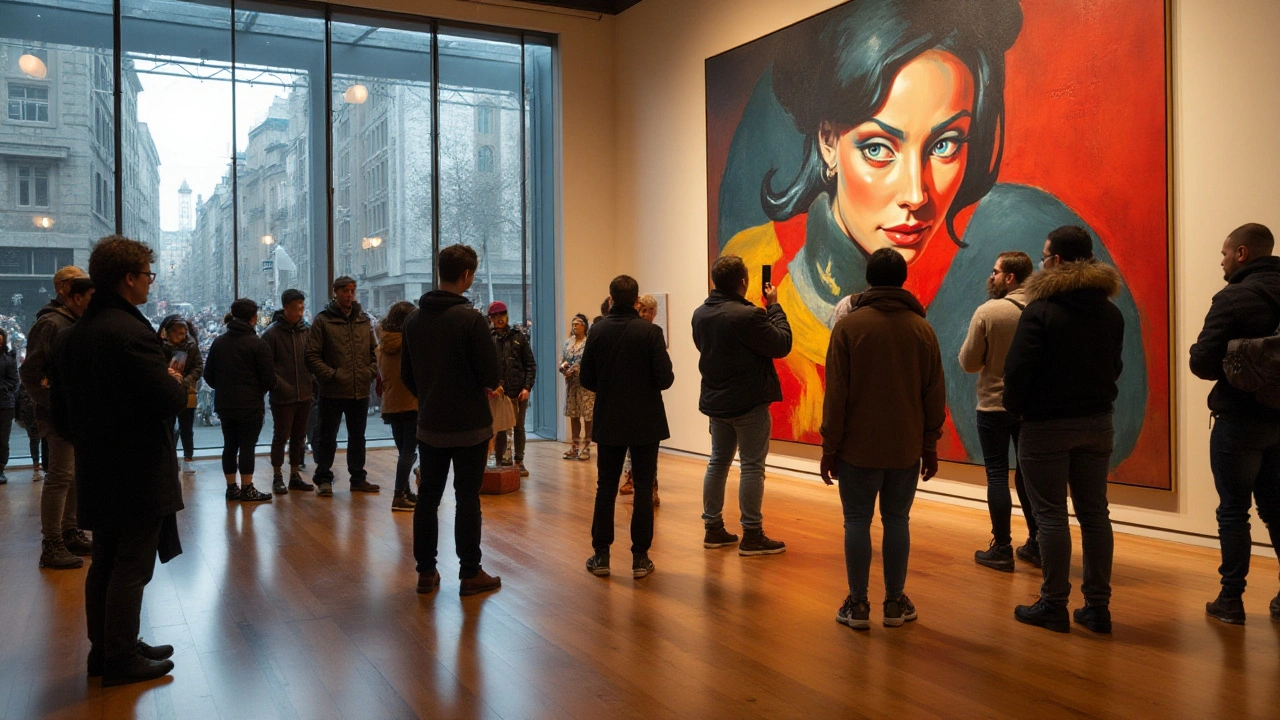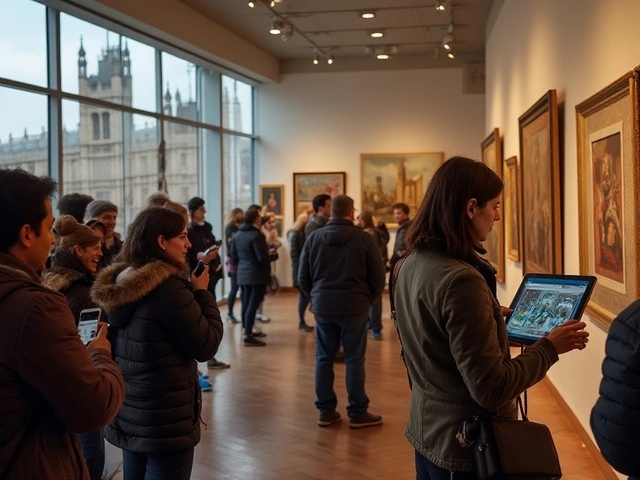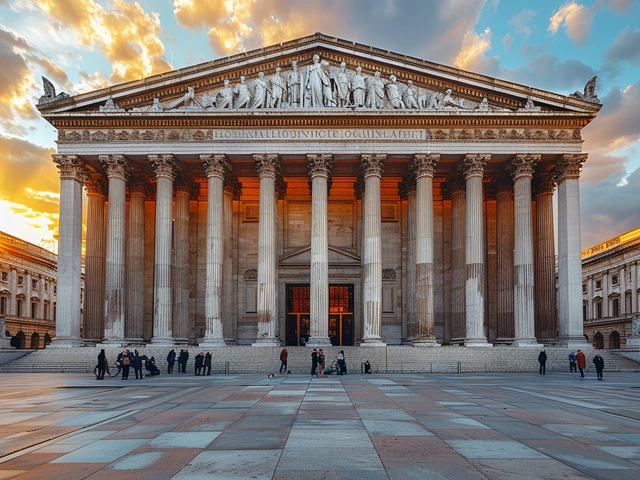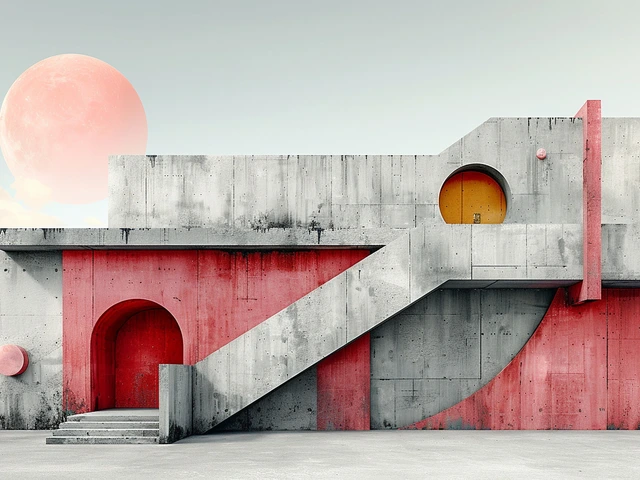In the dawn of the 20th century, a revolutionary movement called Cubism emerged, forever changing the trajectory of art. Spearheaded by creative minds like Pablo Picasso and Georges Braque, Cubism shattered traditional perspectives, inviting artists to explore the complex dimensions of reality through a new lens.
Instead of adhering to realistic depictions, Cubism introduced fragmented geometric forms and multiple viewpoints, offering a fresh, adventurous approach to visual interpretation. It wasn't just a style; it was a profound philosophical shift that influenced countless artists, leading to various abstract art forms we celebrate today.
Understanding Cubism's impactful role in art history allows us to appreciate the bold steps these pioneers took, paving the way for innovative expressions that continue to inspire and challenge perceptual boundaries.
- The Birth of Cubism
- Key Artists and Innovations
- Cubism's Influence on Modern Art
- Breaking Traditional Perspectives
- Transition to Abstract Art
- Legacy and Continuing Impact
The Birth of Cubism
The early 20th century was a time of great experimentation and transformation in the art world, marked audaciously by the emergence of Cubism. This radical movement stood in stark contrast to the traditional artistic conventions of the time, challenging the perspectives that had dominated Western art for centuries. The seeds of Cubism were sown in 1907 when Pablo Picasso, inspired by African and Iberian sculpture, painted Les Demoiselles d'Avignon. This piece broke free from the constraints of linear perspective, a concept that had been the cornerstone of European painting since the Renaissance. By portraying figures with distorted forms and a flattened pictorial space, Picasso effectively dismantled centuries-old norms and initiated a dialogue that would inspire generations of artists.
Another key figure, Georges Braque, was instrumental in the development of Cubism. His engagement with Picasso resulted in an intense period of collaboration and innovation between 1908 to 1914, a period sometimes referred to as the 'Analytical Cubism' phase. Together, they explored how objects could be deconstructed into abstract shapes and reconstructed from multiple angles and perspectives. This was not merely a stylistic choice but a philosophical inquiry into the nature of perception and reality. The ability to depict multiple dimensions and viewpoints simultaneously was a groundbreaking approach, setting the stage for the broader evolution of abstract art.
In reflecting on the birth of Cubism, art historian Alfred H. Barr commented that this movement "was one of the most radical and important in the history of modern art. It not only broke with the past, but ushered in a fresh era of visual language." Such was the significance of this transformation that it also prompted other artists to consider alternative modes of representation and, ultimately, a shift away from trying to emulate nature closely. The movement's influence extended to many domains, including literature, architecture, and music, contributing to a profound cultural shift during this era.
To appreciate the departure Cubism heralded, one must look at the primary techniques that defined it. Cubist artists employed fragmentation and reassembly of objects in a way that emphasized geometric forms, often creating a sense of chaos and energy on the canvas. They also broke away from the palette and techniques that favored harmony and realism, often utilizing muted tones to allow form and geometry to dominate the work's impact. This was further emphasized by dynamic contrasts in light and shadow, which provided depth and further distorted the perception of space.
The importance of texture and materiality also plays a significant role in the birth of Cubism. Experimentations with mixed media were frequent, as artists sought to explore the boundaries of art without being hampered by traditional materials. These varied approaches converged into a robust, new form which pushed beyond mere aesthetics towards profound philosophical considerations about how we perceive and interpret the world around us. The birth of Cubism was not just a turning point in art history; it was an impetus for radically reshaping culture and perception in ways that resonate to this day.
Key Artists and Innovations
At the forefront of the Cubism revolution stood two iconic figures: Pablo Picasso and Georges Braque. Their collaboration between 1907 and 1914 formed the foundation of what would become a seismic shift in the art world. Pablo Picasso, with his exploratory prowess, was already disrupting norms before Cubism through his Blue and Rose Periods. His piece 'Les Demoiselles d'Avignon,' created in 1907, is often cited as a pivotal precursor to Cubism, breaking away from linear perspective and adopting fragmented forms. This work was a daring departure from established techniques, using sharp angles and depicting subjects from multiple viewpoints simultaneously.
On the other hand, Georges Braque brought a delicate sensitivity to the art movement, honing a more technical approach. His interest in simplifying forms and abstraction is evident in works like 'Houses at L’Estaque' (1908), where he began to flatten form into geometric shapes and limited palette colors. The synergy between Braque and Picasso cannot be overstated; together, they melded their aspirations and styles to birth Analytical Cubism, a phase characterized by dissecting objects into monochromatic fields and planes.
"Cubism is no different from any other school of painting. Cubism is an art dealing primarily with forms, and when a form is realized through volumetric lines rather than shading and light, that's Cubism." — Georges Braque
The era of Synthetic Cubism followed, starting around 1912, marking a shift with Picasso and Braque using brighter colors and introducing textures and patterns into their work. This phase also signaled the beginning of collage as an artistic technique, integrating newspaper clippings and other materials into their paintings to add new dimensions and references to everyday life. This innovation transformed not only how art could be seen but what it could be made from, ultimately inspiring various other movements within abstract art. Their partnership, despite its eventual dissolution partly due to the outbreak of World War I, established a blueprint for deconstructing forms, pushing the boundaries of perception, and embracing the abstract forms that would inspire countless artists thereafter. It is worth noting that other artists, like Juan Gris and Fernand Léger, contributed significantly to Cubism and its expansion, adopting unique stylistic elements that further enriched the movement's complexity and depth.
The collective impact of these artists and their innovations cannot be underestimated, as they laid the foundation for the evolution of modern art, continuously resonating through disciplines and inspiring future generations to question, deconstruct, and creatively reconstruct the world as we know it.
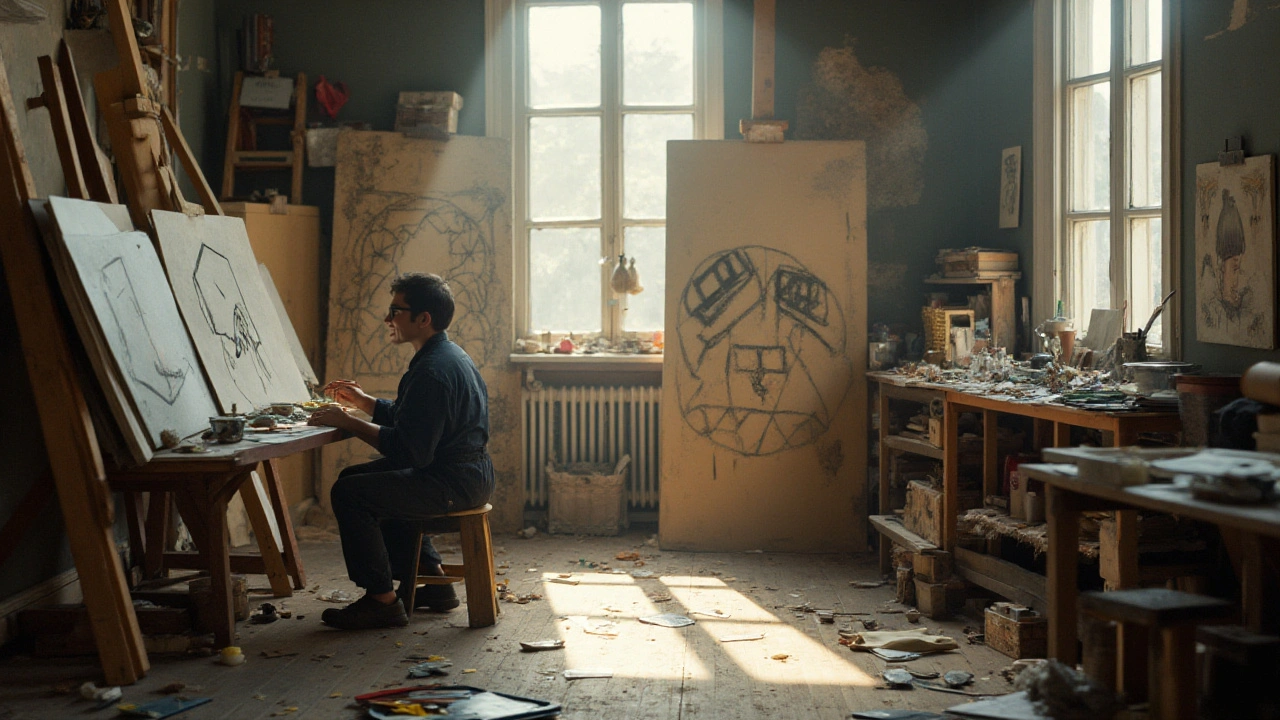
Cubism's Influence on Modern Art
From its inception, Cubism became a revolutionary force that shook the foundations of the art world, positioning itself as a catalyst for myriad abstract styles. In a time dominated by realistic and romanticized representations, Cubism offered an audacious departure from convention by introducing a new way of perceiving the world. It reconstructed forms and perspectives, breaking objects into facets and multiple angles, a technique that soon inspired artists to transcend beyond the visible and into the realm of abstraction.
The journey of Cubism into the broader spectrum of abstract art saw its methods become pivotal in questioning and deconstructing reality. Artists began to explore how a painting might convey the essence of its subject in a manner free from mimetic representation. This transformation was not just a stylistic evolution, but a philosophical shift, encouraging artists to explore the metaphysical, the emotional resonance of form, and form itself as a subject. By the early 1920s, its influence was evident in the works of artists across continents who adapted and built upon the Cubist foundation, spawning movements such as Futurism, Constructivism, and Surrealism.
Cubism’s impact on modern art is perhaps no more vividly illustrated than in the words of MoMA's founding director Alfred H. Barr Jr., who said, “Cubism became one of the broadest, most valid, and most professional bases for modern painting.”
The analytical dissection it proposed compelled the art community to question, 'What truly defines space, structure, and time in the visual realm?' Such provocations liberated artists from the restraints of one-point perspective and linear storytelling, spurring them to experiment with color, texture, and the spatial dimensions of the canvas.
The versatility of Cubism can be observed in its permeation into architecture, music, and literature, transcending traditional artistic boundaries. Architects like Le Corbusier translated its geometric abstraction into buildings, merging mathematical precision with aesthetic grace. In music, the syncopated rhythms of composers such as Igor Stravinsky mirrored the fractured, dynamic compositions that characterized Cubist paintings. Literary figures, too, dabbled in Cubist ideology by fragmenting narratives, allowing a multiplicity of voices and perspectives to weave together like threads of a collective consciousness.
Moreover, the dialogue between Cubism and popular art forms like cinema displayed its broad reach. Filmmakers adopted the Cubist mantra of simultaneous viewpoints in montage sequences, disrupting linear narratives to portray stories in a non-sequential manner. This dialogic interplay between mediums fortified Cubism's status as a cornerstone of modernistic evolution. Through exhibitions and personal networks, Cubist artists collaborated and shared their revolutionary ideas, ensuring that its principles spread and were interpreted by countless creative minds globally.
To truly appreciate the depth of Cubism's reach in art history, one must acknowledge how it shattered the preconceptions surrounding visual representation. It emboldened artists to challenge reality and authenticity within their work, promoting a movement away from serving as mere reflectors of life to becoming interpreters of the universe. By embracing abstract forms, artists could convey more profound truths and spiritual themes, made possible by the cubist vision that redefined what art could express. Today, its legacy continues to resonate, reminding us how a bold leap into abstraction can transform and redefine entire artistic paradigms.
Breaking Traditional Perspectives
At the heart of Cubism was a radical departure from the conventional norms and techniques that had been the bedrock of art for centuries. Traditional art sought to represent reality through a direct and singular perspective, often adhering to rules of proportion and depth that mimicked the natural world as closely as possible. Cubism, however, upended these conventions by proposing that reality could be understood in a multifaceted way, seen from numerous angles at once, and constructed through a more intellectual process. This movement introduced the idea that art could not only depict the visible world but also convey the artist's perception of different temporal and spatial dimensions, which had a profound impact by fundamentally redefining the role of art.
The techniques utilized by Cubists became their hallmark. By employing sharp geometric shapes and interlocking planes, artists were able to deconstruct subjects into fragments and reassemble them in abstract forms. These forms simultaneously represented multiple points of view, suggesting a deeper truth beneath the visible surface. The goal was not just to depict objects, but to show the essence of them from various perspectives. This approach was illustrated in Picasso's renowned painting, 'Les Demoiselles d'Avignon,' where he transformed traditional figure painting by fracturing the subjects' bodies into angular pieces, eschewing viewer expectations and inviting contemplation.
As Cubism evolved, it became less concerned with the object and more with the process of seeing itself. It was this shift that propelled the movement to influence modern abstract art, encouraging artists to abandon representation in favor of exploring form and space. The transition marked a move towards abstraction and non-objectivity, and many modernist artists drew inspiration from the layered complexities introduced by Cubism. The movement’s contribution to abstract art cannot be overstated, as it laid the groundwork for subsequent developments in art.
Pioneering art critic Clement Greenberg once noted, "Cubism did not only bring the picture closer to the visual and material surfaces of objects, but also released the image from depiction, challenging artists to rethink the very constructs of art."
The aftermath of these radical ideas paved the way for diverse movements such as Futurism, Dadaism, and ultimately, the entirety of abstract expressionism. Not only did Cubism influence the nature of artistic expression, but it also sparked changes in related fields. For example, architects found new possibilities in the reshaping and restructuring of spatial concepts, inspired directly by Cubist principles. These interdisciplinary effects underscore how breaking away from traditional perspectives not only revolutionized the canvas but also extended into broader cultural and intellectual areas, thus encapsulating the enduring legacy of Cubism in shaping the pathway for modern artistic endeavors.
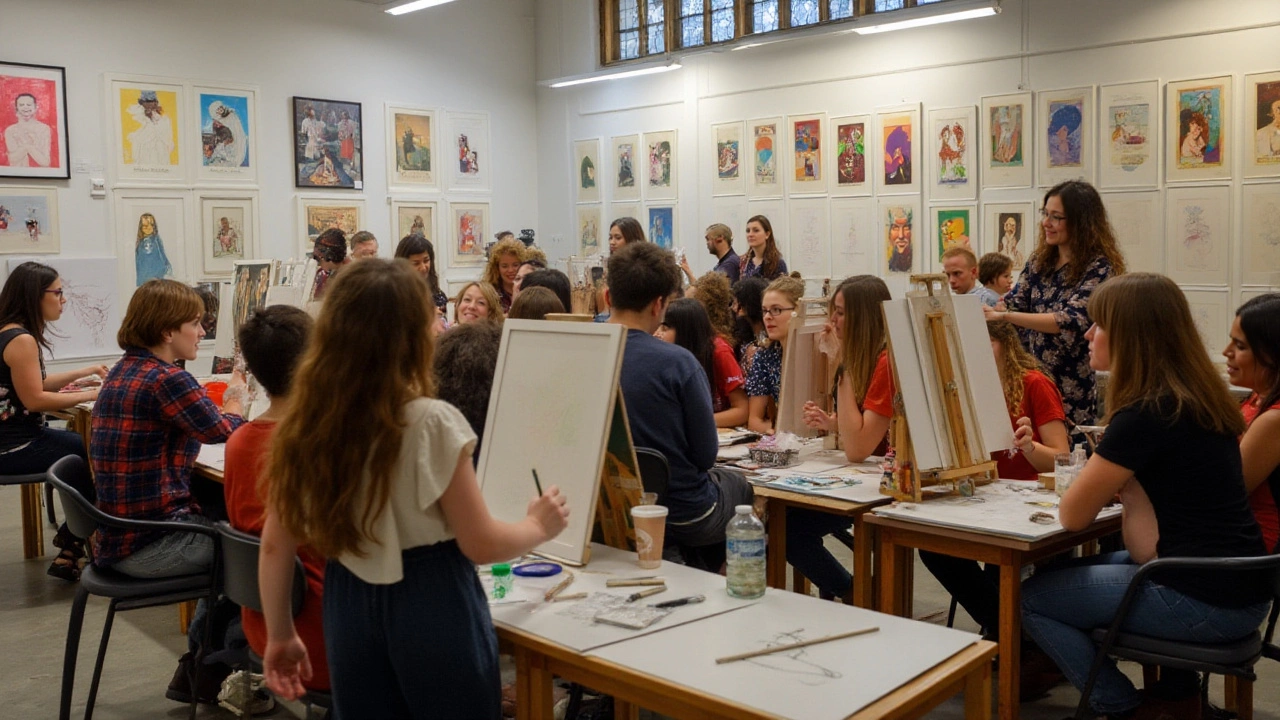
Transition to Abstract Art
The birth of Cubism in the early 20th century was not only a rebellion against the artistic norms of its day, but it was also a crucial bridge to what we now know as abstract art. As artists like Picasso and Braque explored the deconstruction and reconstruction of forms, they inadvertently laid the groundwork for an abstract movement that would soon take the art world by storm. At its core, Cubism challenged the notion that art should mimic real-world perspectives. By using geometric shapes and fragmented compositions, artists were free to imagine and convey reality in ways that defied the limitations of realism. This paved the way for the concept of abstraction, where colors, forms, and lines were used freely to express emotions, ideas, and experiences without the constraint of depicting recognizable objects.
One might wonder, how does Cubism truly blend into the abstract and become a movement of its own? It was this very experimental spirit that encouraged other artists to veer even farther from traditional representation. Movements such as Abstract Expressionism owe much to the foundation built by Cubism. Abstraction, with its focus on spontaneous, automatic, or subconscious creation, found its essence in Cubism's radical reinterpretation. As abstract painters began to focus on the medium itself, exploring the effects of pure color and form, they dived into what Cubism had started. A notable figure, Wassily Kandinsky, often recognized as a pioneer in abstract art, took inspiration from the cubists' break from direct representation. He once noted that art shouldn't be bound to any form of traditional representation. Kandinsky's works epitomized this ethos, dripping with intense color and raw emotion, devoid of tangible context.
Moreover, the transformation from Cubism to abstract art resonates deeply within the cultural environment of the early 20th century. During this time, points of view on everything from politics to technology were evolving rapidly, and so too was art. The urgency of modernity pushed artists to communicate experiences that words might struggle to express. Cubism's exploration of multi-faceted viewpoints became a metaphor for the fractured modern experience, consequently inspiring abstractionists to seek even greater depth in ambiguity and emotion. Abstract art embraced this by giving form to feelings, spiritual themes, and complex existential ideas. This evolution marked a significant shift in how art was both created and consumed, setting the stage for profound philosophical and visual dialogues.
Yet, Cubism's role was more than just stepping stone. The very nature of its fragmented forms and intertwined perspectives became a fundamental part of the abstract vocabulary. In essence, these artistic legacies blend seamlessly into the fabric of the abstract styles that followed. They share a spirit of inquiry and disruption that continues to influence contemporary artists and challenges them to push boundaries. The transition was not simply a progression but a catalytic expansion of stylistic possibilities.
"Every act of creation is first an act of destruction," proclaimed Picasso, a statement that eloquently captures how Cubism dismantled old notions to birth something entirely new. Truly, this radical breaking down of form opened up unlimited possibilities, allowing abstraction to flourish in its wake.
Legacy and Continuing Impact
As the shockwaves of Cubism resonated through the art world, its legacy became vivid not just in paintings but in numerous aspects of creative expression. This movement almost single-handedly challenged and redefined traditional artistic norms, encouraging a more liberating exploration of form and perspective. Cubism's daring departure from conventional representation inspired various avant-garde movements like Surrealism, Futurism, and of course, Abstract Art, each adopting and adapting its characteristic fragmentation of form and multiplicity of perspectives. The reverberations of Cubism's revolutionary outlook can still be seen in the works of modern artists who continuously push boundaries in exploring visual storytelling.
With its roots deeply embedded in experimentation, Cubism allowed artists to break free from the constraints of realism, opening doors to endless creative possibilities. This not only transformed how art was created but also how it was taught, leading to a paradigm shift in art education. Art schools around the globe began to emphasize the importance of understanding form as an expression of deeper realities beyond the surface. In today's context, the influence of Cubism is evident in how artists approach conceptual challenges, proving that the core tenets of this movement remain as relevant and inspiring as ever.
The impact of Cubism extends beyond the confines of traditional art and has infiltrated diverse mediums such as architecture and design. Interior spaces and buildings now often incorporate cubic elements and multifaceted surfaces that draw inspiration from this avant-garde movement. Interestingly, digital art and technology-driven creations also owe part of their ancestry to Cubism, as these fields similarly embrace abstraction and multifaceted representation. The pioneering spirit of Cubism reflects a profound and enduring willingness to question the status quo and dismantle preconceived notions, as seen in many contemporary disciplines today.
One cannot discuss the continuing impact of Cubism without acknowledging the enduring reverence the art community holds for the pioneers who dared to challenge aesthetic conventions. The relentless curiosity and experimentation by figures like Picasso and Braque influenced not only their contemporaries but also future generations of artists who constantly seek fresh ways of seeing and depicting reality. Picasso, in particular, encapsulated this legacy through his extensive body of work, which continues to be studied and celebrated worldwide.
"Art is a lie that makes us realize the truth," Picasso famously stated, encapsulating the Cubist ethos of transcending realism to uncover deeper truths.
For those examining the historical trajectory of art, Cubism provides invaluable insights into how transformational shifts can influence subsequent eras. Its legacy is a testament to the power of innovation and the boldness required to alter the fabric of creative thought. Whether through the direct adaptation of its core principles or by subtle incorporation of its ideals, Cubism has left an indelible mark on the world, inviting continuous exploration and reinterpretation. Its enduring impact reminds us that at the heart of every great artistic movement lies the audacity to imagine things not as they are but as they can be. Such is the spirit of Cubism, a force that continues to inspire and provoke, more than a century after its inception.

